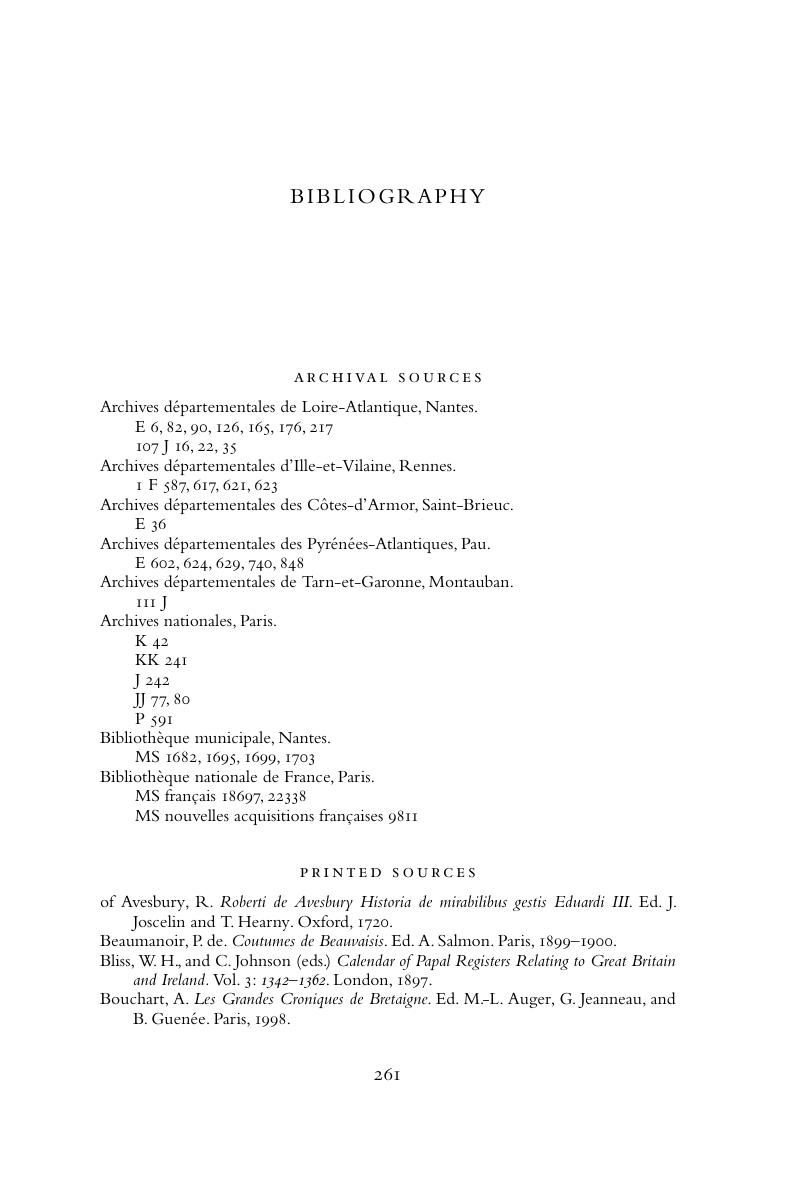Book contents
- Frontmatter
- Dedication
- Contents
- Illustrations, Maps, and Tables
- Acknowledgements
- A Note on Names
- Abbreviations
- Introduction
- 1 The Career of Jeanne de Penthièvre
- 2 Concepts of power in Jeanne de Penthièvre’s acta
- 3 Managing Property: Inheritance and Seigneurial Partnerships
- 4 Managing People: Followers and Service
- 5 Managing Order: Conflict, Negotiation, and Women as Lords
- 6 Debating the Social Context of Princely Power in 1341
- 7 Legitimate Rule and the Balance of Power
- Conclusion
- Bibliography
- Index
- References
Bibliography
Published online by Cambridge University Press: 31 March 2020
- Frontmatter
- Dedication
- Contents
- Illustrations, Maps, and Tables
- Acknowledgements
- A Note on Names
- Abbreviations
- Introduction
- 1 The Career of Jeanne de Penthièvre
- 2 Concepts of power in Jeanne de Penthièvre’s acta
- 3 Managing Property: Inheritance and Seigneurial Partnerships
- 4 Managing People: Followers and Service
- 5 Managing Order: Conflict, Negotiation, and Women as Lords
- 6 Debating the Social Context of Princely Power in 1341
- 7 Legitimate Rule and the Balance of Power
- Conclusion
- Bibliography
- Index
- References
Summary

- Type
- Chapter
- Information
- Princely Power in Late Medieval FranceJeanne de Penthièvre and the War for Brittany, pp. 261 - 281Publisher: Cambridge University PressPrint publication year: 2020

